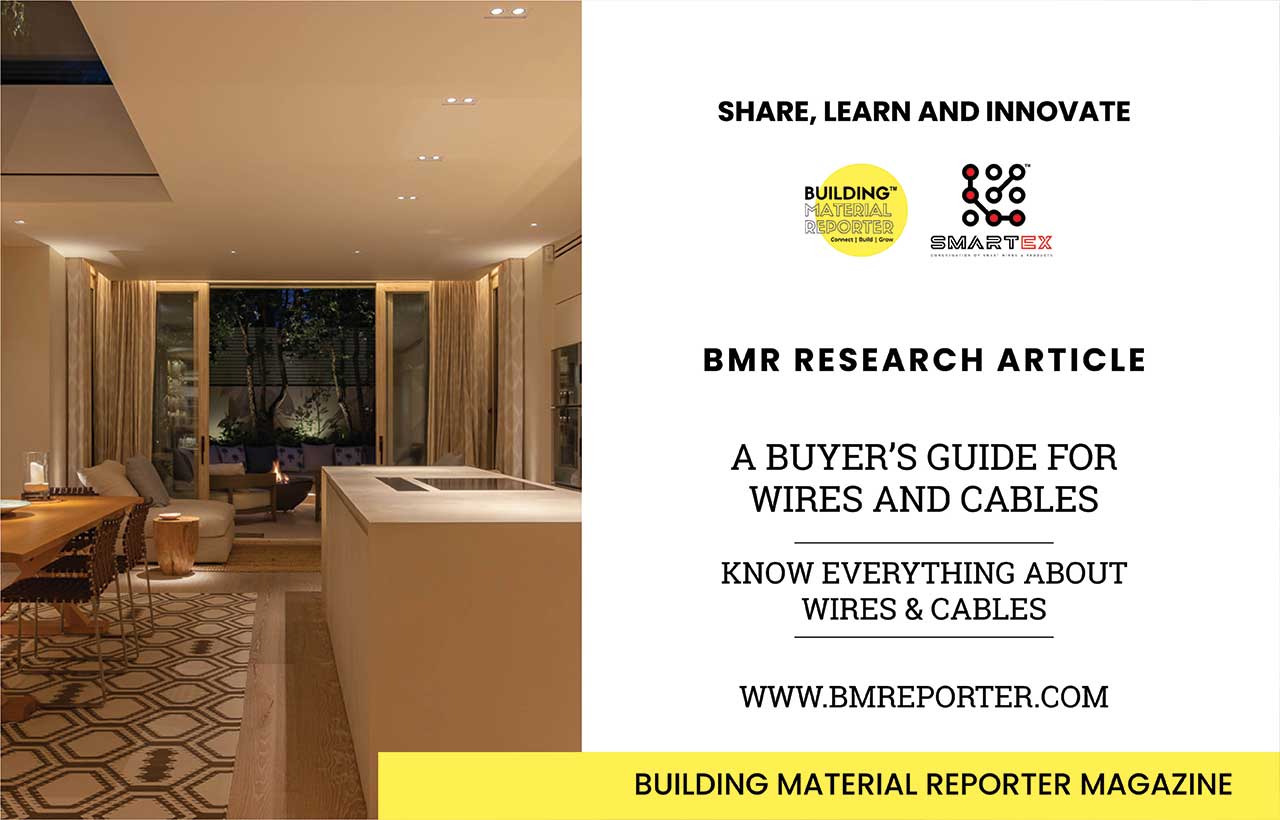Buyer's Guide for Wires and Cables You Need to Know
- July 16, 2024
- By: Yukti Kasera
- PRODUCTS AND MATERIALS
 In both home and commercial settings, wires and cables are essential parts that enable the transmission of data, messages, and electricity. It's important to comprehend wire types, applications, standards, and other important aspects while selecting the correct wires and cables. The goal of this article is to provide you a thorough understanding so that you can choose wires and cables wisely.
In both home and commercial settings, wires and cables are essential parts that enable the transmission of data, messages, and electricity. It's important to comprehend wire types, applications, standards, and other important aspects while selecting the correct wires and cables. The goal of this article is to provide you a thorough understanding so that you can choose wires and cables wisely.
Types of Wires and Cables
Electrical Wires: There are several varieties of electrical wires, such as single-core and multi-core models. While multi-core wires bundle several conductors into a single insulating sheath, single-core wires only have one conductor. Which of these is best depends on how flexible, how simple it is to install, and how many circuits are required for the particular application.
Power Cables: The purpose of power cables is to transfer electrical power. Usually, they are composed of conductors made of aluminum or copper, with copper having a higher cost and superior conductivity. Power cables are classified by their voltage ratings, which show the highest voltage they can safely take, and may also be armored for added protection against physical harm.
Coaxial Cables: The concentric inner conductor, insulation, shielding, and outer jacket of coaxial cables define them. They are appropriate for applications like internet connections and television transmission since they are frequently used to transmit high-frequency signals.
Fiber Optic Cables: Fiber Optic Cables use plastic or glass fibers to convey data by means of light pulses. They are perfect for networking and telecommunications applications because of their benefits, which include high bandwidth, resilience to electromagnetic interference, and appropriateness for long-distance transmissions.
Factors to Consider When Buying Wires & Cables
Two important factors to examine are Application and Environment. Ascertain whether the cables will be used indoors or outdoors. Outdoor cables need extra defense against weather and UV rays. In cases when the environment is extremely hostile, take into account chemical resistance and temperature ratings.
Electrical specifications, including voltage and current ratings, must be appropriate for the intended use. Whereas voltage ratings show the highest voltage the cable can bear without insulating breakdown, current ratings guarantee that the cable can safely carry the necessary load without overheating. By adhering to established industry standards for performance, safety, and environmental impact, wires and cables are guaranteed to meet Quality and Safety standards. Seek certifications that attest to respect to high quality and safety laws, such as UL (Underwriters Laboratories), CE (Conformité Européenne), and RoHS (Restriction of Hazardous Substances) compliance.
Setting up Minimum bend radius, which establishes the maximum bend angle at which the cable can be bent without causing damage to its insulation or conductors, is one of the requirements. For long-distance Installations in particular, take into account the pulling tension required to guarantee a seamless and secure cable deployment.
Cost and Longevity should be evaluated not only based on the initial purchase price but also on the total cost of ownership over the cable's lifespan. Although they may initially cost more, high-quality cables can provide greater longevity and dependability, which can lower long-term maintenance and replacement expenses.
How to choose the right supplier?
Think about aspects like product availability and delivery timeframes when choosing a wire and cable supplier. A provider with a good reputation for quality and customer service is a good choice because they may offer helpful assistance not just during the purchasing process but also beyond.
For some projects, customization and special requirements could be required. To ensure compatibility and performance in particular applications, certain providers offer customisation options for cables made to specific standards. To save money, find out about bulk discounts for purchasing in large quantities.
 The importance of environmental considerations is growing. Whenever feasible, choose cables that are produced with sustainable materials and methods. Inquire about the supplier's recycling procedures for outdated or broken cables to reduce the negative effects on the environment and encourage appropriate disposal methods.
The importance of environmental considerations is growing. Whenever feasible, choose cables that are produced with sustainable materials and methods. Inquire about the supplier's recycling procedures for outdated or broken cables to reduce the negative effects on the environment and encourage appropriate disposal methods.
Some Tips for Maintenance and Handling
In order to protect cables from damage during installation and use, proper handling is essential. To protect the conductors and insulation of the cables, adhere to the recommended bending radii and refrain from pulling the cables taut above their maximum pulling strain.
Detecting wear, damage, or degeneration in cables requires routine testing and inspection. To guarantee dependability and safety, use the proper testing equipment to examine for continuity, insulation resistance, and other performance indicators.
Conclusion
When buying wires and cables, a number of technical requirements, external circumstances, and supplier capabilities must be taken into account. You'll be well-equipped to select cables that satisfy your unique needs for performance, longevity, and safety if you adhere to this buyer's guide. Make quality, standard compliance, and supplier dependability your top priorities when it comes to residential, commercial, or industrial applications to guarantee the best possible performance and long-term viability of your electrical and electronic systems.
 Building Material Reporter believes in serving the best! Stay tuned with us for more ideas and news related to construction, home decor, interior design, new projects, technology, architecture and innovative materials in the industry.
Building Material Reporter believes in serving the best! Stay tuned with us for more ideas and news related to construction, home decor, interior design, new projects, technology, architecture and innovative materials in the industry.




